1. Information
Project name: Greenhouse Children's Library
Location: 216 Neungdong Road, Gwangjin-gu, Seoul
Site Area: 4,303m2
Gross Area: 3,810m2
Building Coverage: 37.81%
Floor Area Ration: 88.54%
Purpose: Library, Cafe
Scale: 4 story
Number of Parking Lots: 3
2. Purpose
Make 'Expected' space to 'UNEXPECTED' space
When I first entered the animal performance hall, the space was expected.
Otherwise, in the basement and pit zone, everything was new.
I was interested in this contrast; expected and unexpected.
3. Tools
- Excavation, Nature, Layering
4. Program
I choose the children's library as a program.
First, there is no library in the park.
Second, due to the park arrangement, the site is a relatively quiet zone.
Third, It is a good location to preserve books because the building faces north.
I reinterpreted this building as a light in section collage and plaster model.
My building is composed of 3 parts; a dark lobby & cafe zone, a bright library hall, and a dark preservation library.
I divide the library zone by using light; bright is for people, and dark is for book protection.
I want people to feel 'unexpected' feelings when they move from space to space, contrasting with light.
And these spaces are connected by the main core which was originally a water pool.
5. Circulation & Program Diagram
In the circulation diagram, I divided 3 accesses; one for bright access, dark access, and universal access.
[To the Bright Access]
To get to the bright zone, you can enter the first floor and use the main core.
Or you can use the bridge and enter the second floor, look around the exhibitions and enter the bright library hall.
And I bring in nature things in this space to connect the site and building to make people experience light, nature, and books.
[To the Dark Access]
To get to the dark zone, you can enter the first floor and go down by using the main core.
Also, these preservation libraries are connected by vertical stairs and an elevator.
[Universal Access]
It is a universal circulation for handicapped people.
They can park on the first floor and use two elevators in the lobby and back space.
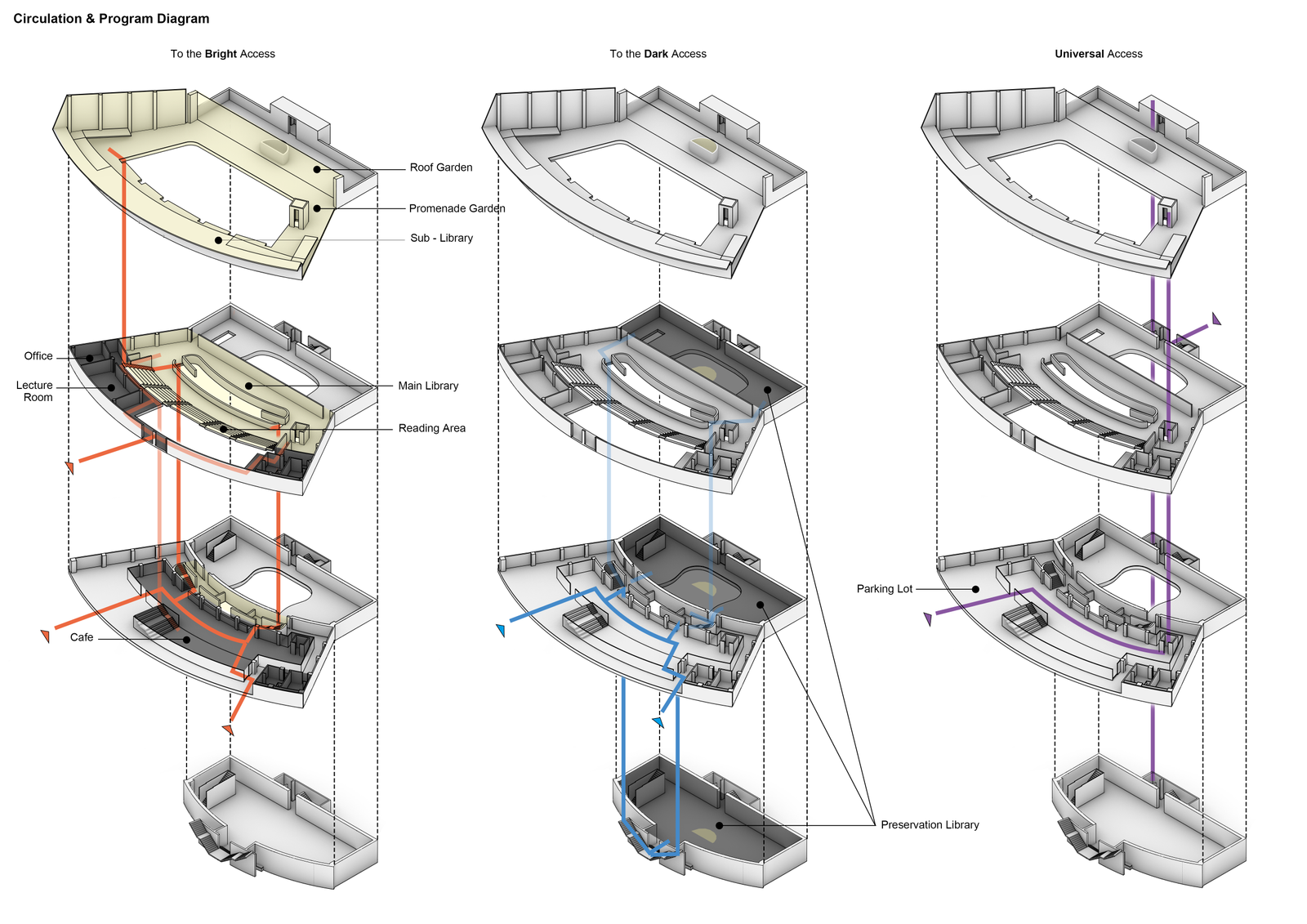
6. Overall Structural System Axonometric
I use reinforced concrete beams and posts which were originally existed.
I also use the existing space frame but change the roof material to pre-fabricated translucent polycarbonate.
I use that material also on the main facade.

7. Main Facade
I recycled poly acodeck panels from the original roof and aluminum panels from the original facade and randomly arranged them.
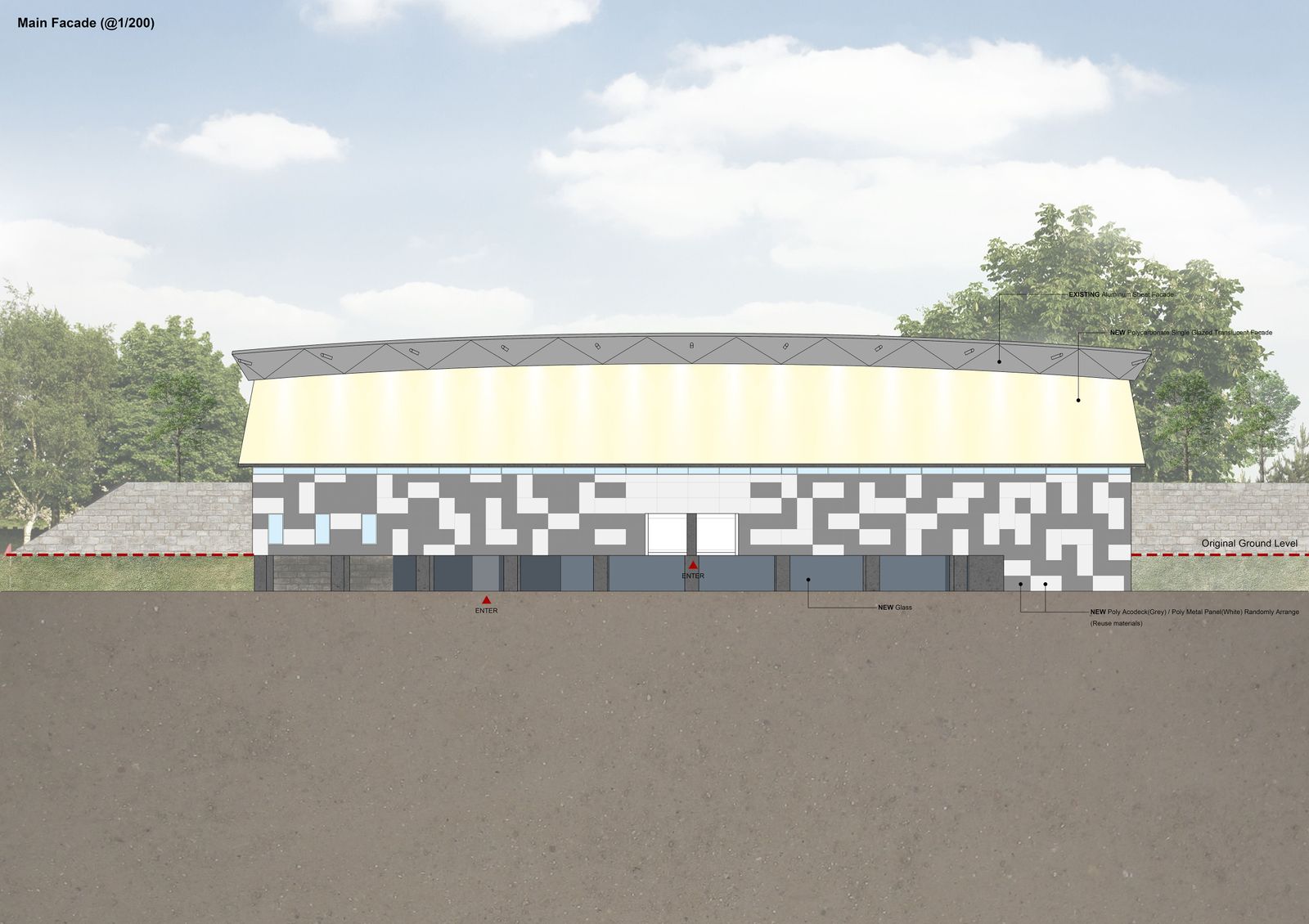
8. Construction System Axonometric Section
In section detail, I was supposed to make expected space into unexpected space by using light.
I want people to experience this impression by moving space to space by the main core.
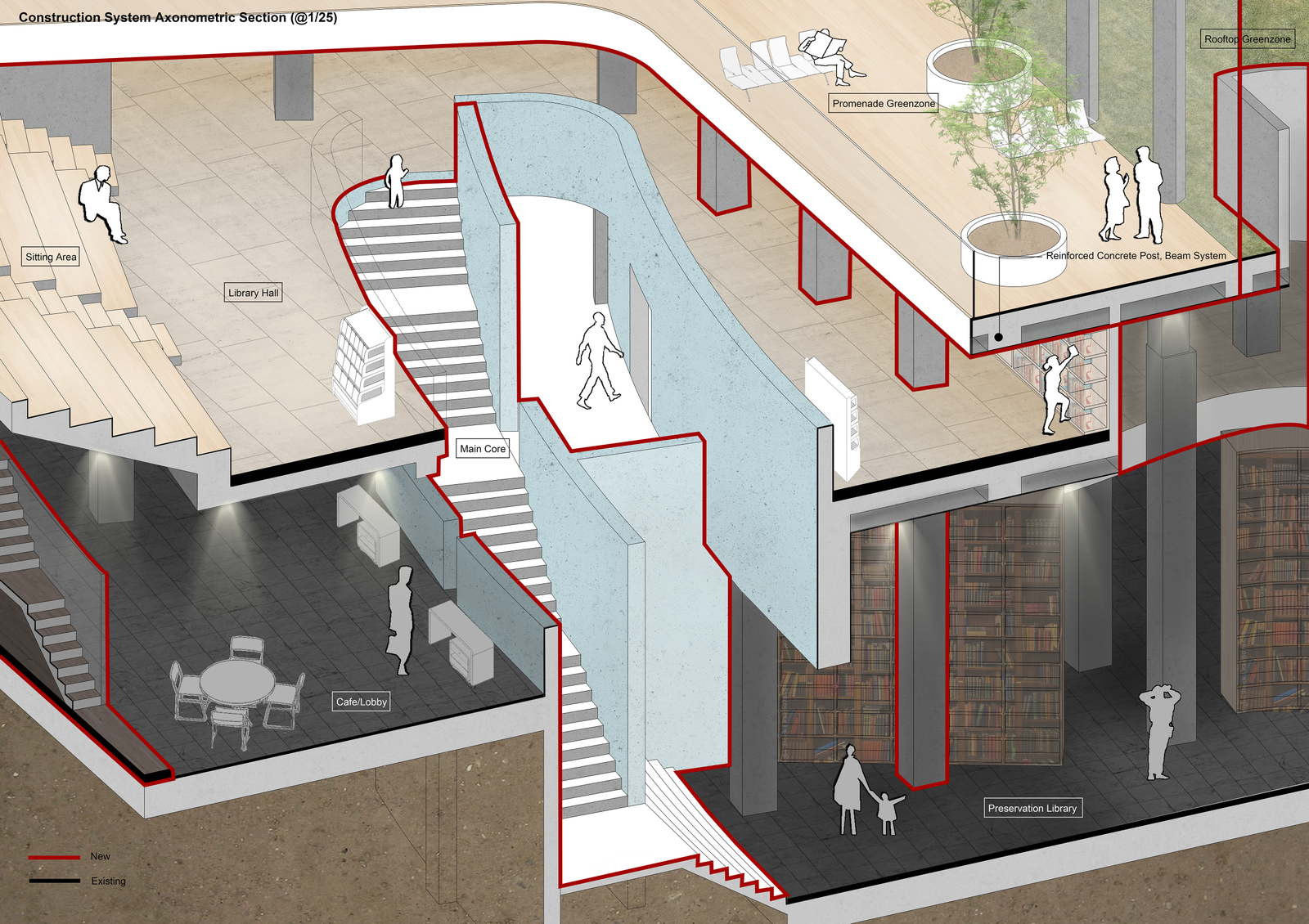
9. Plans and Sections
10. Render
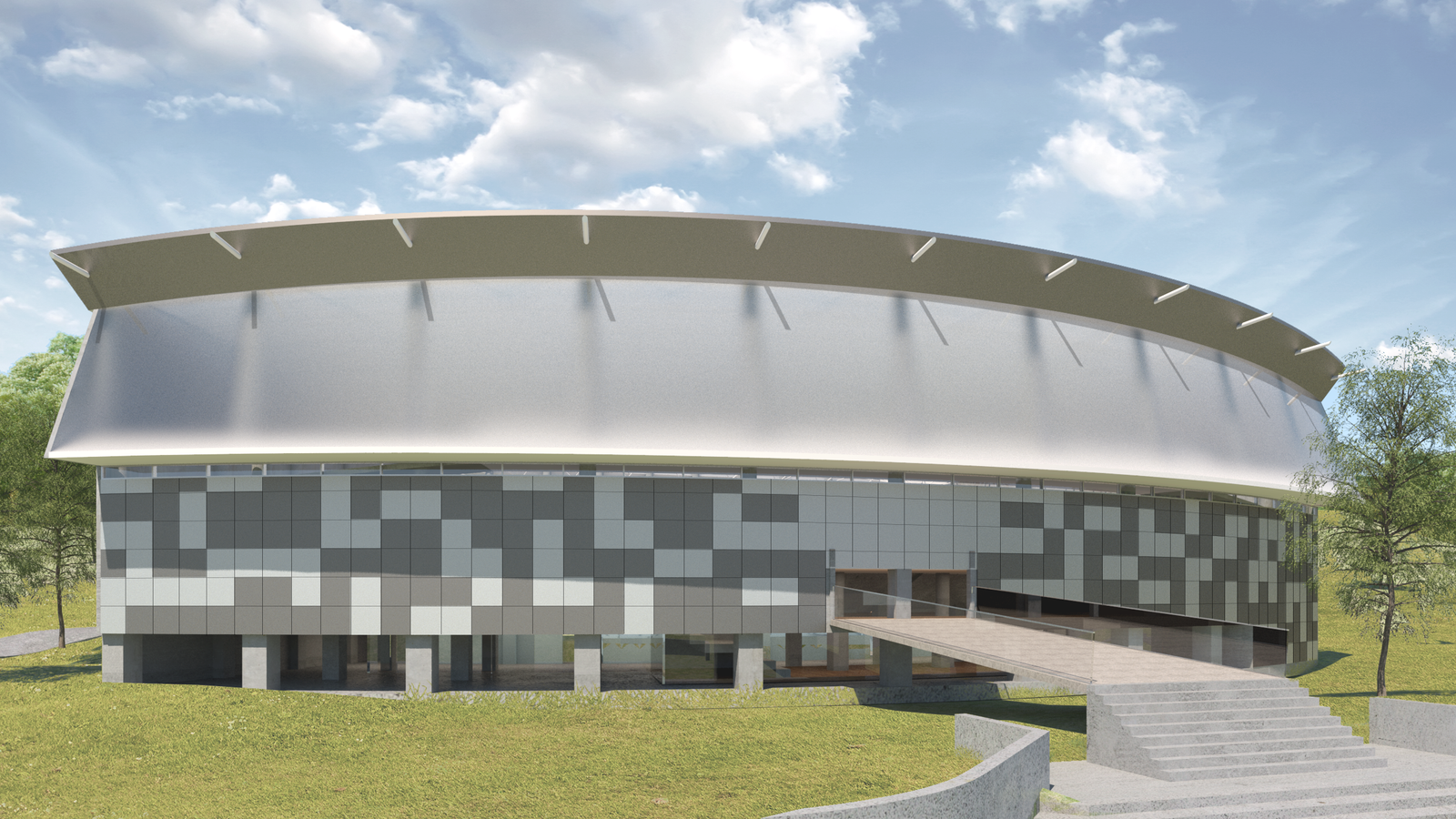
11. Model
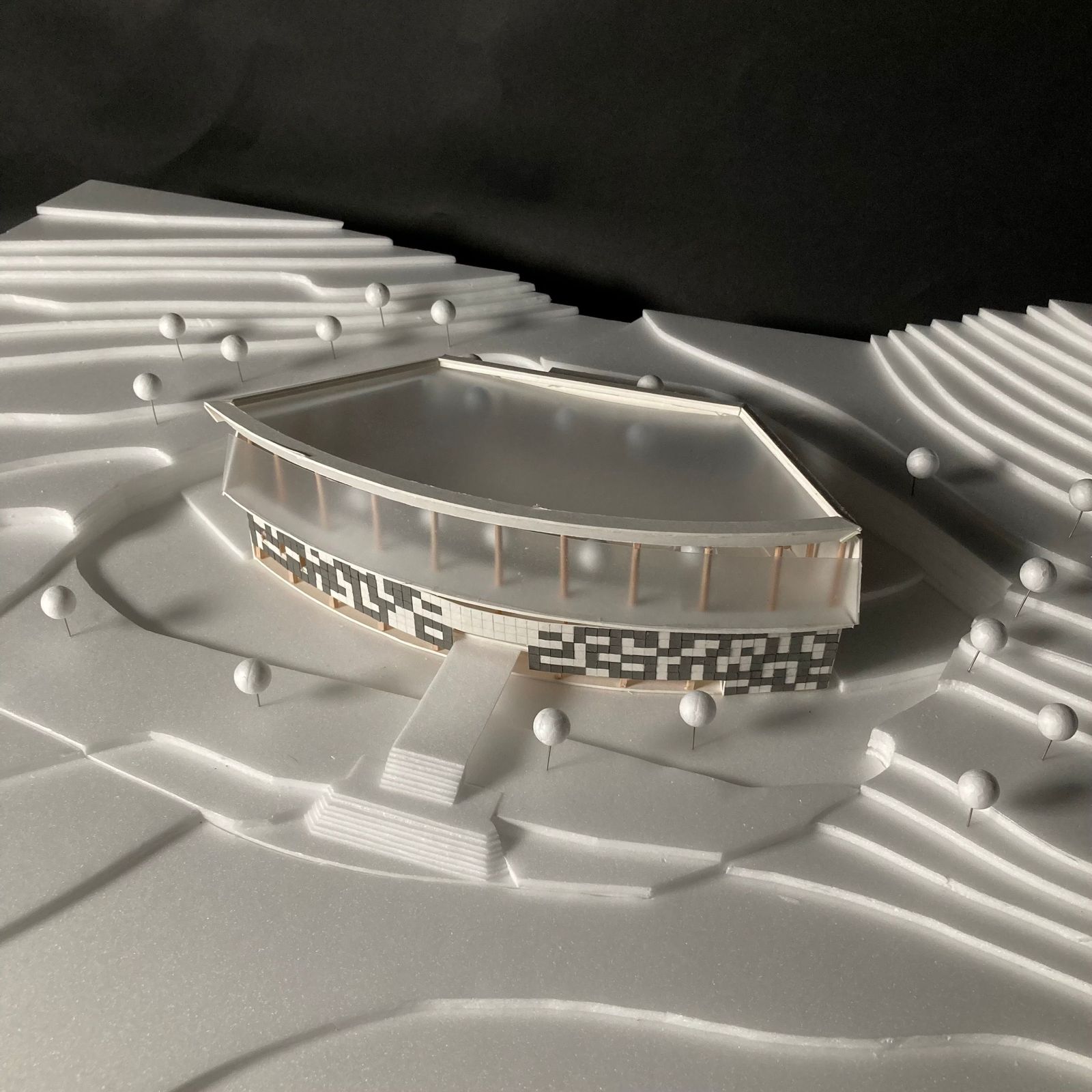
12. Panels
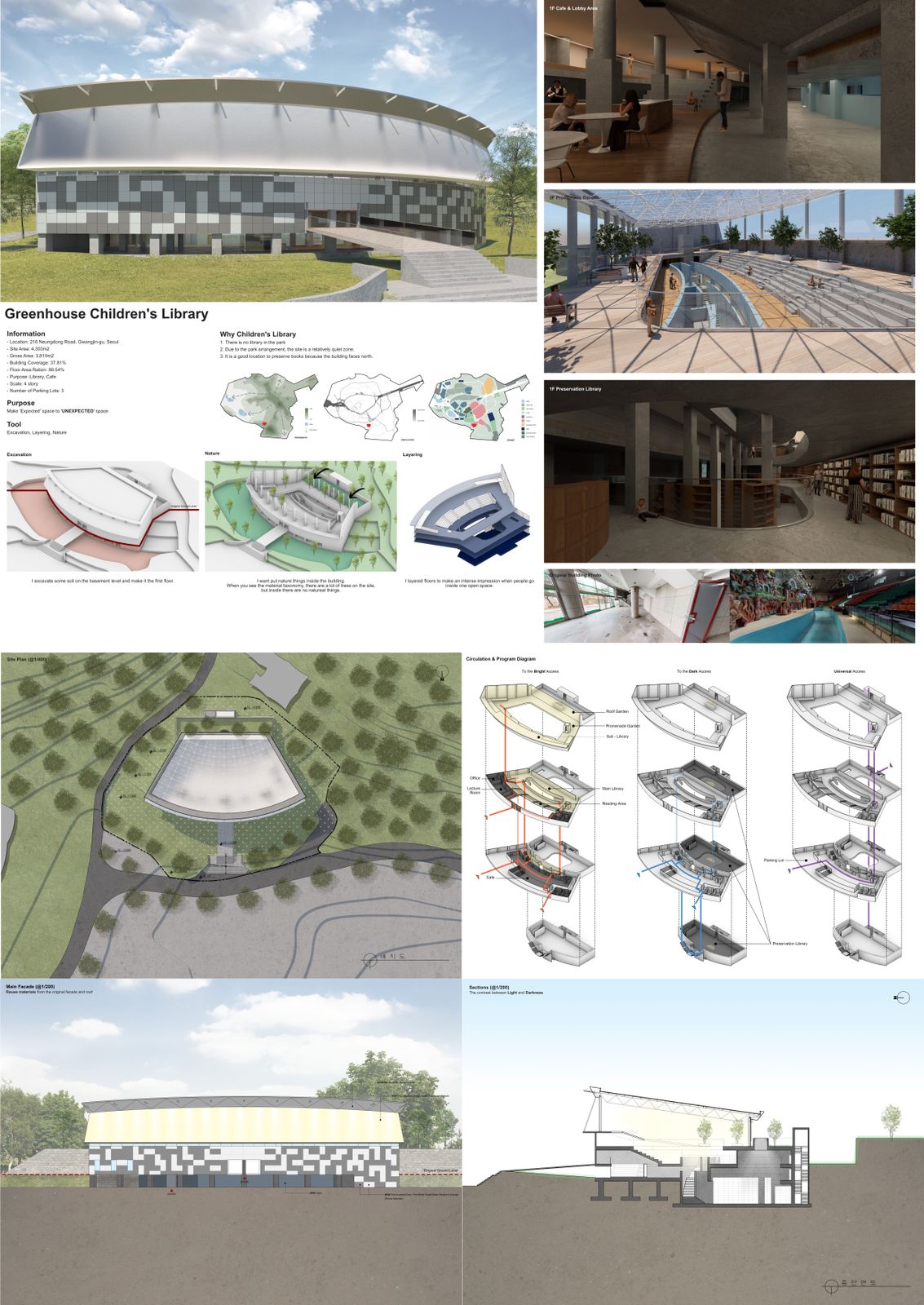
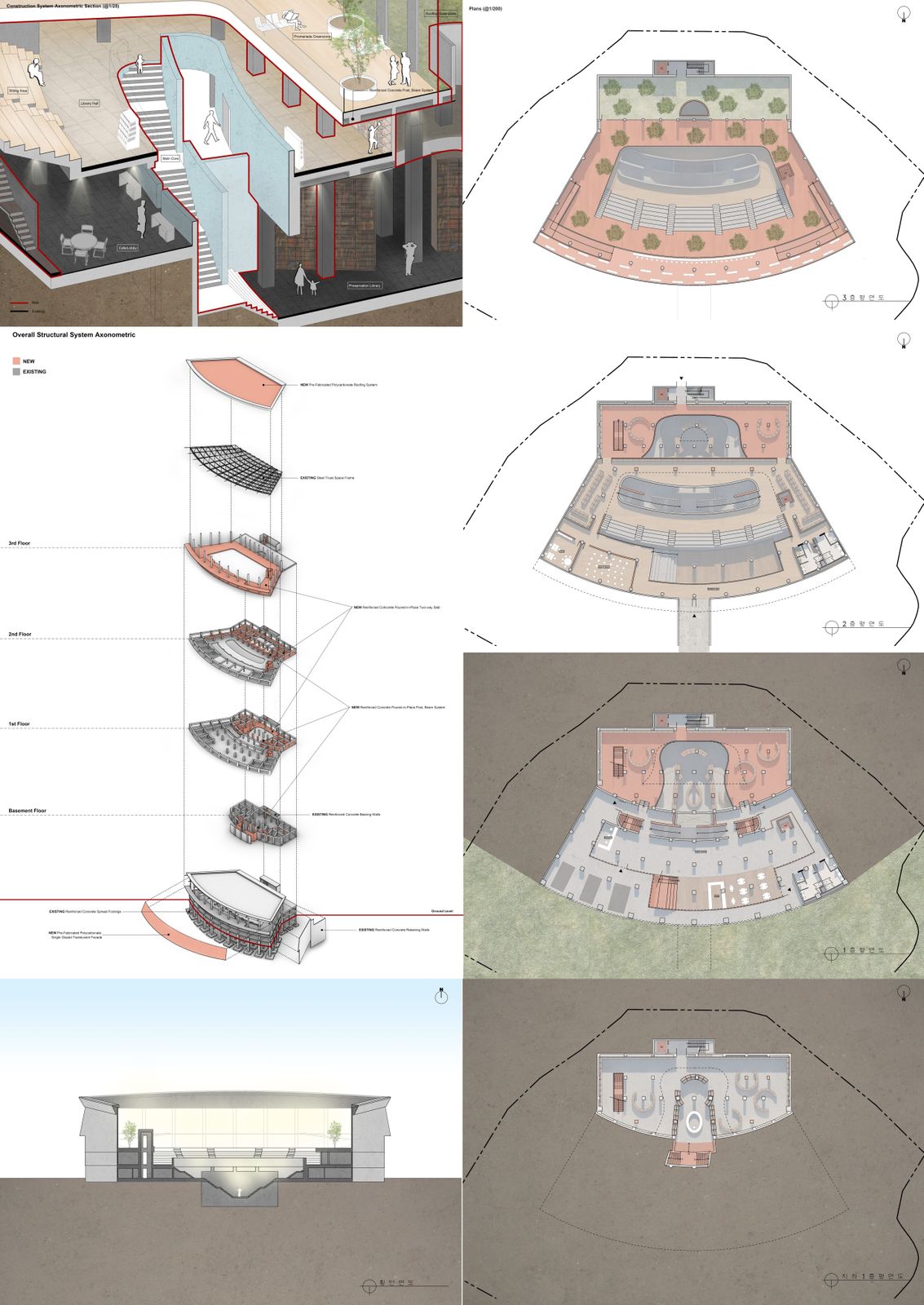
Copyright © uosarch.ac.kr., Some rights reserved.